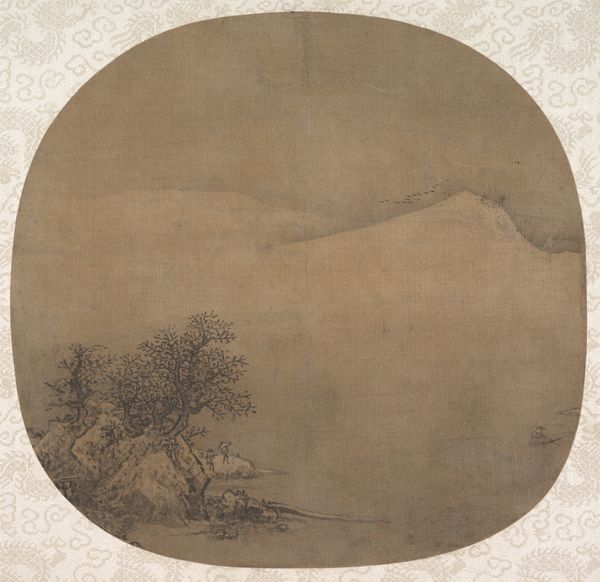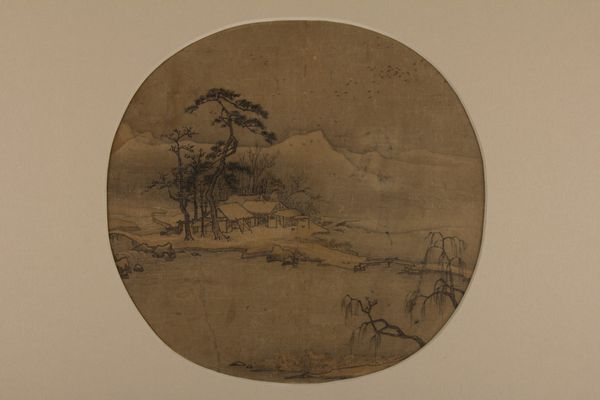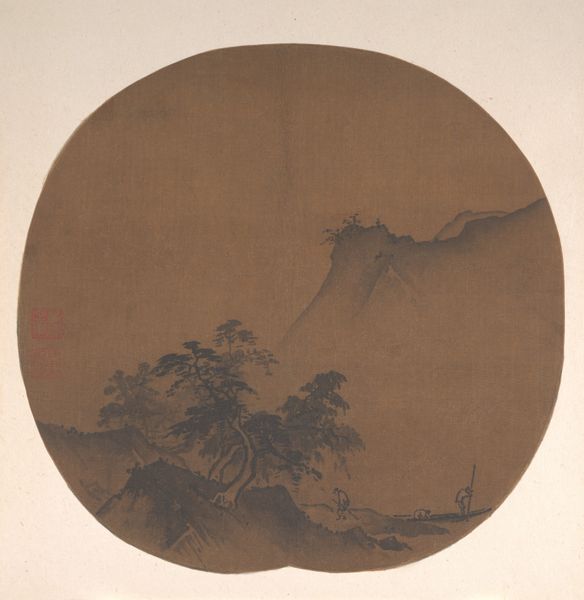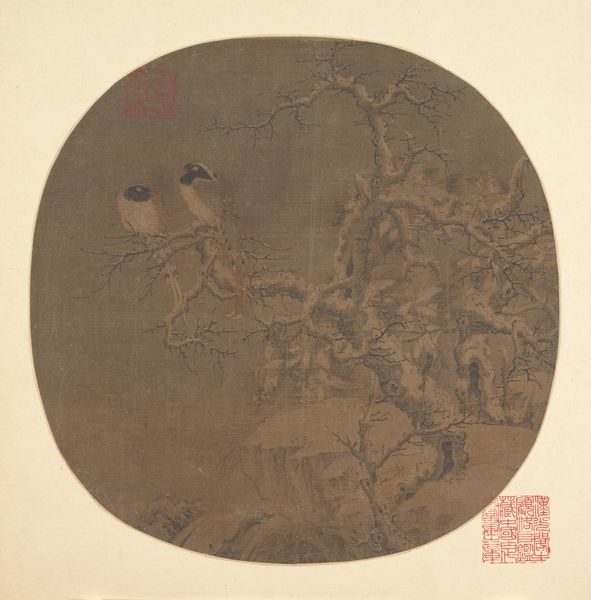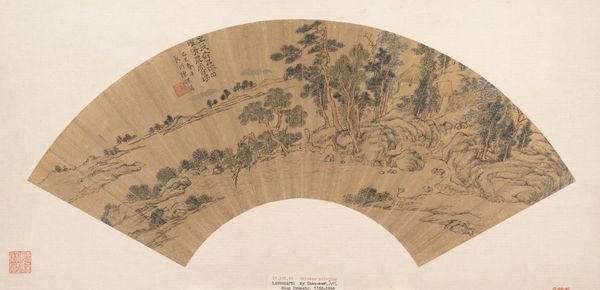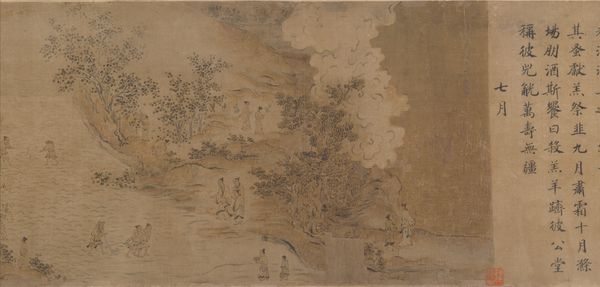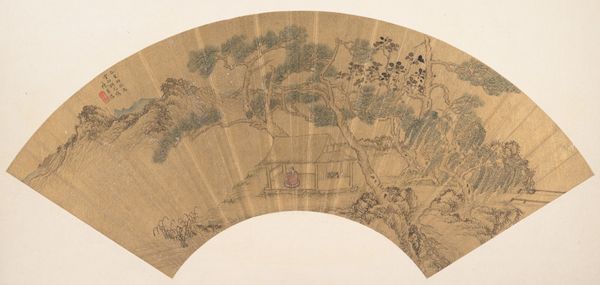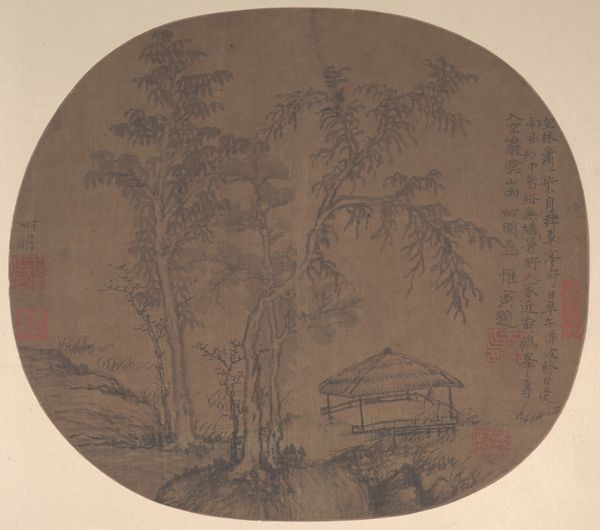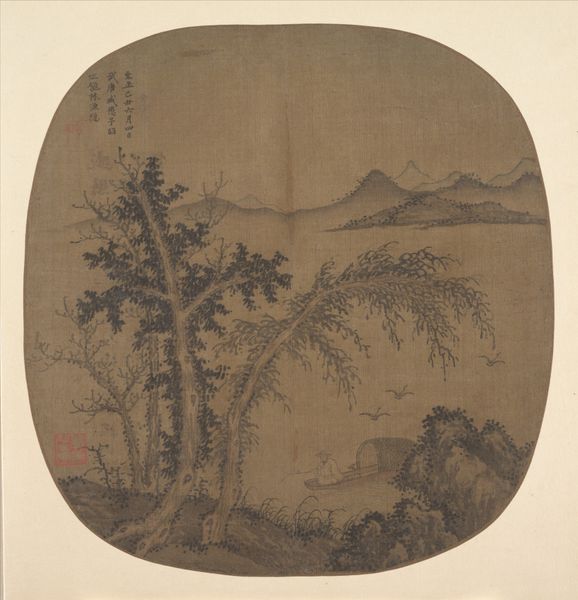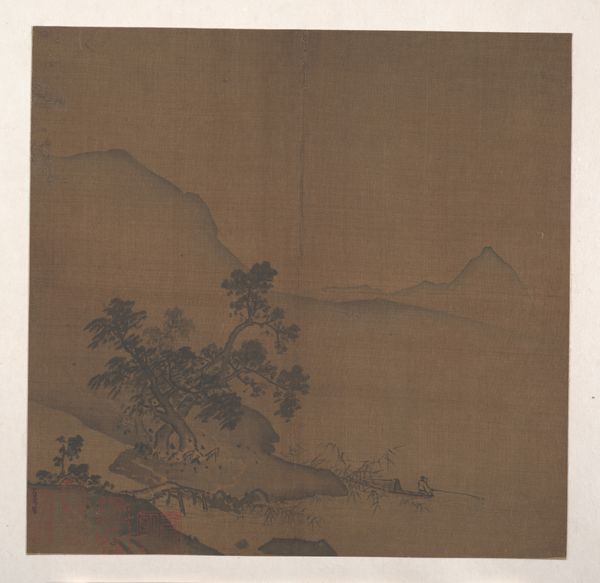
tempera, painting, watercolor
#
water colours
#
tempera
#
painting
#
asian-art
#
landscape
#
22_ming-dynasty-1368-1644
#
watercolor
#
orientalism
#
watercolor
Dimensions: Image: 9 9/16 x 10 3/16 in. (24.3 x 25.9 cm)
Copyright: Public Domain
Curator: Welcome. Here we have a Ming Dynasty painting, "Village and Temples in Jiangnan", dating from 1400 to 1433, painted in tempera and watercolour by an unknown artist. What strikes you first about it? Editor: The serenity. It’s hushed and contemplative, like a memory fading at the edges. The circular format reinforces this feeling, a contained little world. Curator: The round shape is, in fact, significant. This piece was likely mounted as a fan painting. It offers a fascinating insight into the artistic materials available, especially paper production and pigment availability during that time, shaping what colours we see now. Editor: I imagine holding it, a whispered story unfurling as I turn it. Do you think the choice of watercolour was also dictated by availability, or more by aesthetic preference – lending itself to a delicate expression? Curator: Probably both. Watercolours were favoured for their ability to create atmospheric effects, but their accessibility surely played a part, influencing its status as a common medium for personal or scholar art as opposed to the monumental paintings of the court. Editor: It makes me wonder, too, about the lives of those who lived in this "village." The brushstrokes feel both meticulous and free. Are they romanticizing, or trying to represent the real labours of these farmers or temple workers? Curator: That’s the question, isn’t it? These paintings provide clues about idealized landscapes versus tangible living and working conditions, showing how art could simultaneously reflect reality and desire. They used to make the paper in those very villages, of course. Editor: This intersection of the pastoral and the spiritual definitely strikes a chord. Thinking about the repetitive, skilled labour involved, how the art, the landscape, and the community were all interconnected… I appreciate this glimpse of their world, their labour, the earth giving back art, almost by its own design. Curator: And in return, this glimpse can give us greater appreciation for not just the beauty but also the intricate networks that make art possible, inviting us to reconsider what we see, touch, and value.
Comments
No comments
Be the first to comment and join the conversation on the ultimate creative platform.
